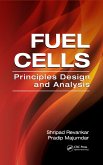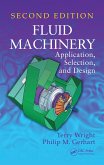This book contains classroom-tested materials designed to meet the academic requirements for students from a variety of scientific and engineering backgrounds in a single course. The first half focuses on classical concepts of thermodynamics, whereas the latter half explores field-specific applications, including a unique chapter on biothermodynamics.
The book's methodology is unified, concise, and multidisciplinary, allowing students to understand how the principles of thermodynamics apply to all technical fields that touch upon this most fundamental of scientific theories. It also offers a rigorous approach to the quantitative aspects of thermodynamics, accompanied by clear explanations to help students transition smoothly from the physical concepts to their mathematical representations.
Each chapter contains numerous worked examples taken from different engineering applications, illustrations, and an extensive set of exercises to support the material. A complete solutions manual is available to professors with qualifying course adoptions.
Dieser Download kann aus rechtlichen Gründen nur mit Rechnungsadresse in A, B, BG, CY, CZ, D, DK, EW, E, FIN, F, GR, HR, H, IRL, I, LT, L, LR, M, NL, PL, P, R, S, SLO, SK ausgeliefert werden.









